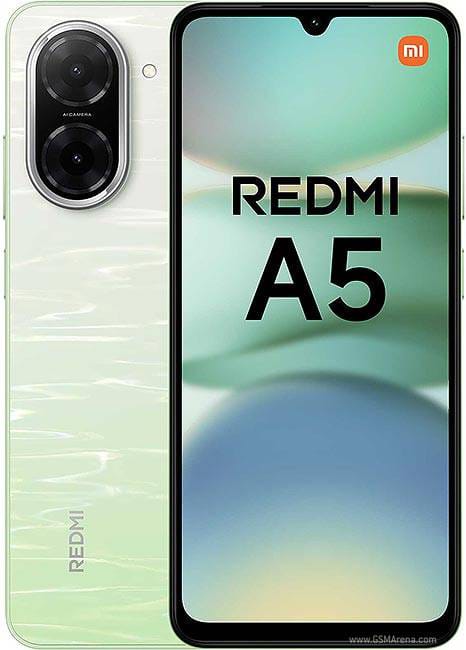Despite the economic conditions and the slowdown in the computer and communication industries in the first few years of the 21st century, new mobile and wireless technologies have never stopped evolving and have paved the way for an intelligent and pervasive mobile environment. The following is a brief survey of those emerging technologies.
1. Cellular Networks
The second generation (2G) of digital cellular networks and services is a phenomenal success worldwide. Voice-centric mobile wireless communication services successfully capitalized on the huge investments mobile network operators (MNOS) made in purchasing spectrum frequency and wireless network infrastructure. For example, 2.5G wireless data services such as GPU and EDGE are being used by a large number of subscribers in Asia and Europe. UMTS/WCDMA and WCDMA2000, the long-awaited 3G networks and services, are expected to deliver high bandwidth and reliable and secure data access with data rates of several megabits per second. 3G network services available in the United States include CDMA2000 1x-EVDO (Verizon) and WCDMA/UMTS (Cingular/AT&T Wireless). In Europe country, where UMTS/WCDMA dominates the market, Vodafone and Orange began providing 3G data services in selected cities in 2004. In Asia, Japan’s NTT DoCoMo (WCDMA) and Korea’s SK Telecom (CDMA2000 1x-EVDO) were the first to launch 3G mobile services in 2001 and 2002.
In addition, some European and Asian MNOs are considering building 4G networks, having demonstrated data rates around 300 Mbits/sec in field trials. No matter which mobile technology will win in the future, one thing is for sure: cellular networks will remain a core component of service packages on smart phones, for both technical and economical reasons.
2. Wireless LAN
The Institute of Electrical and Electronic Engineers (IEEE) 802.11 wireless LAN technology is a perfect example of a technology that initially maintained a low profile, yet experienced explosive growth in the residential network market. A survey conducted by IDC in 2003 found that 34% of those surveyed connected to a wireless LAN network at home compared to 27% at work, and network operators expected to install more than 55,000 new hot spots in the United States over the next 5 years.
Such great success is largely due to the flexibility in setting up wireless LANs and the low cost of wireless LAN equipment. In the United States, the IEEE 802.11b and 802.11g standards operate on the unlicensed 2.4-GHz industrial, science, and media (ISM) band and can provide data rates of 11 Mbit/s and 54 Mbit/s, respectively, while the IEEE 802.11a standard uses 10 Mbit/sec. Despite its growth in the residential market and in some enterprises, many government departments and large companies have banned the use of this technology due to security concerns; both the initial Wired Equivalent Privacy (WEP) and interim Wi-Fi Protected Access (WPA) protocols have proven to have serious security flaws. The IEEE has formed several working groups to address these security issues, as well as other open issues including quality of service and interference with other wireless technologies operating in the same band. For example, in 2004, the IEEE ratified the 802.11i security standard for wireless LANs.
3. Wireless Mesh Networks
Due to the remarkable popularity of wireless LAN technology and the significantly higher bandwidth it can provide for wireless data access compared to cellular networks, some upstarts are building citywide and even nationwide wireless LAN networks that allow seamless roaming between large numbers of access points, effectively creating a wireless mesh network. A key feature of a wireless mesh network is that it is a peer-to-peer, self-configuring system in which each mesh node can relay messages on behalf of others, thus increasing coverage, available bandwidth, and system reliability. Several wireless mesh network routers are currently on the market. The IEEE has formed an ESS Mesh Networking Task Group (802.11s) in an effort to standardize future wireless mesh network protocols and interoperability.
4. WiMAX
Another example of a wireless LAN is WiMAX (Worldwide Interoperability for Microwave Access). WiMAX is an industry forum formed to promote point-to-point broadband wireless access for home and mobile users. WiMAX technology is based on IEEE 802.16 and the European Telecommunications Standards Institute (ETSI) HiperLAN.
It has two forms of wireless service such as: line of sight (between backhaul towers) and non-line of sight (for residences and business users). It has the ability to achieve a range of 31 miles and can provide a bandwidth of up to 70 Mbit/Sec, which is equivalent to a few hundred T1 lines and Internet access using the DSL or cable models. Intel is WiMAX’s strongest supporter. As of this writing, Internet service providers in some major cities are in the process of conducting field trials. Large-scale rollout of WiMAX services to end users may begin within the next 1 to 2 years.
5. Wireless Sensor Networks
A sensor is a small, low-cost, low-power device that can sense fields and forces in the physical world and translate stimuli, such as motion, heat, light, sound, or pressure, into numerical data. With radio capability, a wireless sensor node can transmit data about a state change to other nodes. Thousands of various types of inexpensive wireless sensors can essentially form a wireless sensor network that, once deployed in urban environments or remote areas, will allow for the coordination of information gathering and processing in a fully self-sufficient fashion over long periods of time. Wireless sensor network technology is a key component of pervasive computing because it allows computing facilities to immerse themselves deeply in the physical environment.
Some of the applications of wireless sensor networks include environmental monitoring, habitat monitoring, and traffic control. Ongoing research on the marriage of sensors and mobile devices such as PDAs and smart phones has revealed many interesting potential applications. Challenges of wireless sensor networks include query-informed routing, in-network query processing, security and privacy issues, and sensor system design issues.
6. RFID
A radio-frequency identification (RFID) tag is a small integrated circuit that can respond to an interrogation signal with some simple data using an on-board antenna. RF data transmission does not require line of sight. Passive RFID tags do not require batteries for data transmission, while active RFID tags with more complex circuits require batteries to operate. In a typical application scenario, an RF reader is able to wirelessly collect data from multiple RFID tags and even update the data on those RF tags.
This makes RFID technology extremely compelling for asset and people tracking, inventory monitoring, access control and ticketing, etc. As a sign of the eventual widespread use of RFID tags, Wal-Mart asked its top 100 suppliers to begin using them for cases and pallets of consumer goods by January 2005. Security concerns, privacy issues and a lack of standards, however, have effectively slowed the deployment of RFID tags.
7. WPAN
Wireless Personal Area Networks (WPAN) are a collection of shortrange, low-power, low-cost wireless technologies, including infrared (IR), Bluetooth, and ultra-wideband (UWB). Infrared is a point-point cable replacement technology commonly used on laptop computers and portal devices. Its operating range is quite limited at less than 6 feet, and the effective bandwidth is not suitable for large file transfers. Bluetooth is already widely used in cell phones and PDAs for wireless synchronization using the unlicensed 2.4-GHz spectrum within a range of 30 feet.
It also has the ability to form an ad hoc picnet for group communications. The latest addition to the WPAN family, and perhaps the most revolutionary one, is UWB. UWB offers very high bandwidth data transmission: up to 480 Mbit/Sec within a range of 6 feet and 110 Mbit/Sec within 30 feet. The beauty of UWB is that it can coexist with technologies on the same spectrum, thanks to its unique radio characteristics. UWB is still in its infancy; however, it may eventually replace Bluetooth as the prevalent WPAN solution on mobile devices in the next few years.
Read Also:
- Smart Phones: Universal Mobile Terminals
- Introduction To Smart Phones And Mobile Computing
- Discussion About Health Risks Due To Mobile Phone Use
- Health Risks Due To Mobile Phone Use
- Mobile Phones Risks On Health
- 6G Challenges and Enabling Technologies
- A Journey Of Mobile Networks: From 1G To 6G
- Introduction To Mobile Technology
- Wireless Technologies From 0G To 7G
- Technologies In 6G
- Technologies Used In 6G








Leave a Reply